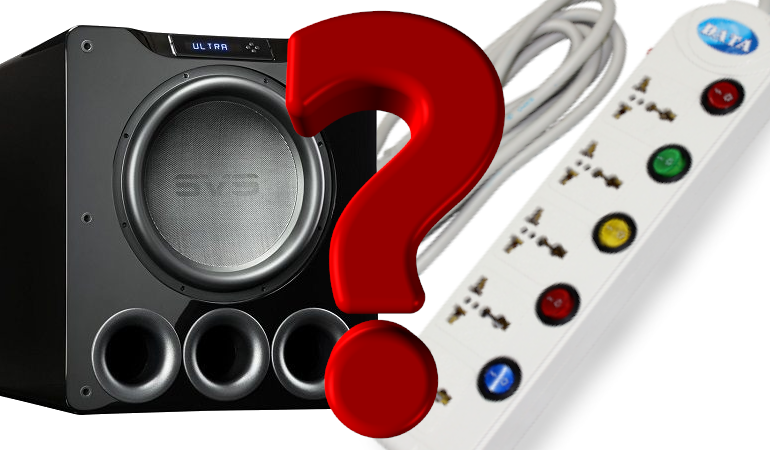How Using a Surge Protector Can Kill Your Bass
Surge protectors are a standard of everyday life. If you care about your electronics, you plug them into a surge protector. This protects them from surges and lightning strikes (theoretically). If you just dropped a lot of cash on your new subwoofer, you want to protect that investment. Naturally, you’d look to a surge protector. But now that you’ve plugged your subwoofer into your surge protector, you’ve noticed that your bass sounds odd. Could using a surge protector kill your bass? I think you know the answer. Here’s why!
Don’t Use Surge Protectors with a Subwoofer!
We specifically (and often) remind people not to use surge protectors with equipment that requires a high current draw. A subwoofer is just such a device. The problem is that the amplifier on the subwoofer is expecting (and needs) access to all the power that is typically available at the wall. In North America, this is 120 volts and typically 15 amps. Off-the-shelf surge protectors generally top out at around 10 amps. You may wonder what the big deal is with the reduced amount of amps available. Let’s convert it to watts.
At 15 amps, your 120 volts can produce 1800 watts. At 10 amps, you only get 1200 watts. If your subwoofer is expecting 1800 watts, but only has access to 1200, it will run out of power and therefore not be able to move the subwoofer driver.
Your Surge Protector Did Kill Your Bass!
What would this sound like? Honestly, it very much depends on the subwoofer and how the amplifier handles the lack of power. The amp should draw power from the wall and use it to fill the capacitors inside the amp. When the signal (movie/music/game/whatever) requires deep bass, the amp will draw power from those capacitors to use to create the sound waves (by moving the driver). It refills those capacitors as they deplete with power from the wall.
If the power from the wall is throttled by a surge protector, those capacitors can’t fill fast enough. Eventually, the power will “run out” and there will be none left to move the driver. If there isn’t much bass in your movie/music/game, then you might not notice any difference. But if you were to listen to a louder passage, or a long bass note or sweep, the subwoofer would seem to cut in and out as it ran out of power.
We always recommend contacting your subwoofer manufacturer about the best way to protect and power your sub. Chances are, they’ll tell you to plug it directly into the wall!


